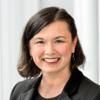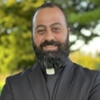Spiritual & Religious Life
Hamilton College Spiritual & Religious Life exists to encourage and nurture the spiritual, religious, cultural, and moral worldview identity and diversity of our campus community.
Meet Our Staff
Rev. Dr. Colleen Hallagan Preuninger ’06
Dean of Spiritual and Religious Life
315-859-4026
As a member of Hamilton’s Student Life leadership team, Preuninger will lead efforts to support students across all faith traditions and spiritual identities, and help ensure that religious and spiritual life is a visible and vibrant part of the Hamilton experience. Appointed in July 2025, Colleen brings 15 years of experience in campus ministry and spiritual leadership, most recently at Stanford University.
Fr. Peter is a Maronite Catholic priest who is also trained in the Roman Catholic liturgical rites. Ordained to the priesthood in his native Lebanon, he served parishes in Beirut and South America, before coming to his current role as Pastor for St. Louis Gonzaga Church in Utica, NY. Fr. Peter celebrates Mass on campus three times a week and is available for confession or informal conversation by appointment.
Ariel joined the Spiritual and Religious Life Office in March 2024. She has worked in higher education since 2018 and brings expertise in arts nonprofit fundraising, communications, and design. She holds a bachelor’s in English, a master’s in integrated design, and a certificate in user experience. Ariel is also an adjunct professor at the University of Baltimore.
Student Organizations
Muslim Student Association (MSA)
Prayer room located on the second floor of the Chapel.
msa@hamilton.edu
Newman Council
Contact
Office / Department Name
Spiritual and Religious Life
Contact Name
Rev. Dr. Colleen Hallagan Preuninger
Dean of Spiritual and Religious Life



